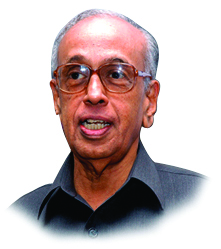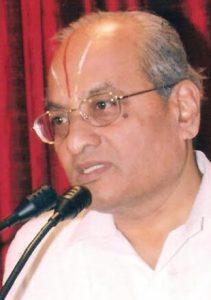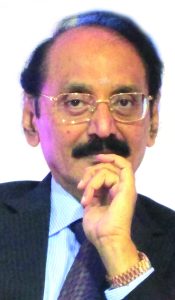At a time when the stock market is scaling the skies and a flurry of public issues are hitting the bourses, long-standing companies that were building their muscles and seasoning their businesses should naturally be looking to cash in. Of course, why not?
After all, the delivery-boy company, Zomato, that had been in business for under ten years suddenly had its market capitalisation turn out to be twice a four-decades-old company in the health care sector, the mother of all hospitals, Apollo. Elsewhere in NYSE, an Indian upstart, non-IIT, non-IIM, non-metro made a splash – Freshworks had a spectacular debut.
One such company looking to cash in is Star Health and Allied Insurance Company Ltd (SHAI). Headquartered in Chennai, it has been a classic case of a David taking on the Goliaths in the industry and coming up trumps. Star was a pioneer to enter this space in 2005 when the idea of a standalone health insurance business was yet untested in India. The man leading the charge was V Jagannathan, an industry veteran who had his hands for over three decades in the industry, including working as the Chairman cum Mana-ging Director of the United India Insurance, the public sector behemoth.
RAISING THE CURTAINS
The health insurance industry is surprisingly still nascent in India, going by the statistics on its overall penetration compared to the potential of the market and that of other insurance branches like life insurance. The health market has three segments: retail, group insurance and government schemes. There are three categories of players: the public sector companies, which emerged in the mid-1970s post the nationalisation of the sector, private players who came on the scene post 2000 and the standalone health insurers (SAHI). Currently, there are four public sector companies, 21 private players and five standalone health companies constituting the market.
STAR’s PUBLIC ISSUE
Star Health will be the first SAHI to get listed on the bourses and the third non-life insurance company, after ICICI Lombard and New India Assurance. Overall, it will be the seventh insurer to go public. There are four other SAHIs in the ecosystem. HDFC Life, ICICI Prudential Life insurance and SBI Life insurance are listed in the life insurance space. State-owned reinsurer GIC Re is also listed.
The public offering will consist of a fresh issue of shares aggregating Rs 2000 crore and an offer to sell 60.1 million shares by existing shareholders.
The net proceeds from the issue will come in handy to augment the company’s solvency levels and boost capital adequacy. As of 31 March 2021, the company’s solvency ratio stood at 2.23x, much higher than the regulatory requirement of 1.5x.
The issue also has a component of an offer for sale by the existing shareholders – Safecrop Investments India (30.68 million shares), Apis Growth (7.68 million shares) as well as the University of Notre Dame DU Lac, MIO Star, ROC Capital Pty, Sai Satish, V Jagannathan, Konark Trust, Bejris Minoo Desai and MMPL Trust. One of the principal stakeholders, the Dada of Dalal Street, Rakesh Jhunjhunwallah, is not putting his stake on the block.
|
V Jagannathan – the bold and the innovative founder
Experts like Dr Dharmendra Kumar who had written an exhaustive treatise on life insurance and an academic of great merit (unfortunately he passed away early this year), N Rangachary, K N Bhandari, M Ramadoss, SS Gopalarathnam and G Srinivasan have liberally shared their expertise and knowledge. These helped us present regular features on interesting developments as also conduct seminars and special lectures on the insurance sector. United India Insurance Co headquartered in Chennai, had its own special features. For over three decades IE has had the benefit of interacting with several of the bright stars of UII. Of these V Jagannathan (VJ) readily comes to mind as one who attempted a big change in the approach to general insurance. Among the forte of VJ has been his human relations. He excelled in convincing policymakers on major changes that could be brought about on issues of great importance to providing quality healthcare to the average citizen. One such proved to be a game-changer. A BRILLIANT innovation… VJ is articulate in Tamil and Telugu apart from English. He presented a brilliant idea to the then chief minister of Andhra Pradesh on providing health insurance cover to the poorer/weaker sections of the Andhra population through a brilliant group insurance concept. He persuaded the AP government to provide, at the government’s cost, health insurance cover to the poor, to afford high quality surgeries for their families at government and private hospitals. It was an extremely invaluable insurance cover for the masses who have been helpless victims, unable to afford essential surgeries; several hundred families also turned to bankruptcy by selling off even their limited possessions and incurring insurmountable debt. VJ extended this marketing with equal facility to Tamil Nadu. Then TN Chief Minister M Karunanidhi was equally appreciative of this brilliant idea of providing succour to the masses. The Kalaignar Kappeettu Thittam provided health cover to more than 40 million of the state’s population providing them and their families access to high quality medicare in government and star private hospitals. UII later extended this to Maharashtra and other states. Eventually this evolved into the Ayushman Bharat of Prime Minister Modi that today provides such benefits to over 50 crore citizens. FEASIBLE INSURANCE… VJ firmly believed that a well curated health insurance policy is not just desirable but immensely feasible. He went about his task with zeal and single-minded commitment. In the process he has been able to get the support of large, public-spirited individuals and investors. He conceived a unique structure of a standalone, exclusive health insurance company. He built a strong team of leaders and hundreds of agents. His extensive contacts with hospitals also helped his company establish sustainable relationships with these. His reputation and his record also enabled his company Star Health to eliminate a third party administration and handle the claims on its own. VJ also focused on ensuring the visibility of his company and of its special features. Star Health has been making excellent use of the visual medium and promotes effectively through popular events like IPL. Like iconic IT start-ups, Star Health has been attracting quantum jumps in valuations and finance support from investors across the globe. For nearly 15 years since inception his company maintained a record of modest claims-ratio, even while most other general insurance companies were bleeding through very high claims ratios. The Covid impact was a double whammy: first was the loss of focus on non-Covid treatments, the mainstay for the health insurance sector; but the huge claims due to the pandemic was unpredictable. Luckily, with the pandemic getting subsided, there are green shoots of a return to better days. Can we look for Star innovating an exclusive, stand-alone insurance company for motor insurance also? – S Viswanathan |
INSURANCE SCENARIO
The segment has grown at an overall compounded annual rate of about 16 per cent, leaping from Rs 37,712 crore in fiscal 2018 to a tad under Rs 59,000 crore in fiscal 2021. Due to the Covid-19 pandemic, the current year has been incredibly demanding for health cover and the industry has clocked an impressive growth of 29 per cent.
The retail segment has primarily driven market growth at around 30 per cent in the preceding four years, vouching that
individuals are becoming more conscious of the increasing risk of health setbacks and associated expenses to avail the best treatment.
Private players gained market share at the expense of the public sector companies, who have fallen below the 50 per cent mark for the first time in 2020-21. The private players are about 28 per cent of the market and the standalone health insurers are slowly inching closer to them at about 25 per cent of the overall slice of the market.
Historically the product segment has been challenged on the high claims ratio and the overall cost associated with marketing. Most companies are in the red as far as health vertical is concerned and the government business and group insurance segments are under stress compared to individual policies. A case in point is Covid insurance scheme. A public sector insurance major, who shall remain unnamed, informally sounded out to its members not to solicit or entertain renewal on Covid policies. Whether that is fair is debatable.
PSUs have been saddled with more government and group business making profitability worse and private players have been stepping up to get more personal and individual health business. Standalone health players have really done well in pushing up the share and penetration in the retail segment by increasing the market share from 39.5 per cent to 49 per cent in the last four years.
The industry’s concentration reflects the relative economic positioning of the states concerned. Maharashtra leads the pack at 29 per cent, Tamil Nadu comes a distant second at 11 per cent , followed closely by Karnataka 10 per cent, Delhi 8 per cent and Gujarat at 6 per cent. These five account for 64 per cent of the all India health insurance market. Pareto’s law is clearly at work.
The cost of procuring is a big issue, with agents, banks and brokers contributing almost 80 to 90 per cent of the market’s sourcing mix. Cashless claims constitute 56 per cent of the market, while TPAs process nearly 70 per cent of all claims. Significantly, Star Health is unique in dealing/handling claims directly, without TPA.
CORPORATE HISTORY
Star Health was incorporated as ‘Star Health And Allied Insurance Company Limited’, a public limited company under the Companies Act, 1956, on 17 June 2005. It was granted its certificate to carry out the business of General Insurance by a certificate dated 16 March 2006, given by the IRDAI.
The company has made rapid strides over the years and come to occupy the pride of place in this niche and has received numerous awards. It was recognised as India’s leading health insurance company at the Dun & Bradstreet BFSI Summit & Awards, 2020.
In 2021 it was awarded “Dream Companies to Work for Insurance – Private Sector” at the World HRD Congres; “Most Innovative New Product Launches or Customer Propositions” at the 13th Global Insurance E-Summit and an award by the Associated Chambers of Commerce and Industry of India (ASSOCHAM). In short, awards came raining.
| PAIN POINTS AND SOLUTIONS
With its strident growth, Star Health also has pain points for all stakeholders — consumers, insurers and the regulator. Here’s a quick walkthrough based on a discussion with industry veterans. CONSUMER SIDE
INSURER’S SIDE
REGULATORY SIDE
KEY SOLUTIONS TO ADDRESS THE PAIN POINTS
|
THE MANAGEMENT
The company has been professionally managed since its inception and the architect of setting up the company and growing it to the current level has been V Jagannathan. The board of twelve has six independent directors and three nominees of promoter shareholders. V Jagannathan is the Chairman and the Pole position of the company.
Star Health Insurance is the largest private company in health insurance with a 16 per cent market share. New India Assurance is the largest company in the health insurance sector, accounting for approximately 18 per cent of the gross direct premium collected by the industry in fiscal 2021. The top 5 companies put together had a market share of 63 per cent; Star Health Insurance is the only SAHI company among the Big Five.
Star built enormous capabilities internally to grow faster than the rest. The number of offices, trained and experienced staff and digital initiatives characterise what the company has done differently to leave the
competition behind.
The enviable market share of 31.3 per cent in FY 2021 and a top line of Rs 8207 crore show its dominance in a very crowded space. During this period, the accretion to business, of Rs 2342 crore, represents a whopping 40.5 per cent of the total industry!
The expense ratio of 33 per cent in 2018 has been declining to sub thirty levels compared to the peers who are at abysmal levels in the 50s and above. The thrifty and economical way of doing business is the hallmark of companies in the south and Star exemplifies that spirit of spending with a clear accent on the bang for the buck, with Star leaving the competition behind.
STAR HEALTH PROMOTERS
Rakesh Jhunjhunwala, Safecrop Investments India LLP and WestBridge AIF I are the Promoters of Star health insurance company. The current promoters acquired the control of the company pursuant to a series of allotments and transfers that took place in 2019 and 2020 under the shareholders agreement.
STAR GAZING AND THE RISING STAR
The India GDP story of hitting a $5 trillion economy, the increased focus on health awareness post the pandemic and the bright prospects for the health insurance sector are a perfect storm for a company with a start-up mindset like Star to thrive. The growing fintech opportunities that endear the customers and the chance to take away the market share from PSUs who are slow-footed are significant upsides in the offing for Star.
The public issue and the broad basing of investors will help the company create the best in class management and with the solid bench of good managers and access to capital, the sky is the limit! – V Ranganathan and V Pattabhi Ram
Unique business wisdom and unusual intution

He had the talent to create long standing friendships across the wide spectrum of business activity, to build diverse management teams identifying most suitable persons for driving key activities and for evaluating business risk even if information is very inadequate.
Anyone would have expected that, VJ after a very successful stint as CMD of a large general insurance company would have started a new GI entity, when he decided to move into entrepreneurship. But he chose to move away from the terrain which he knew very well, into a totally new area like health insurance when information required for running a health insurance company was just not available in India while plenty of information was available for different branches of general insurance. Many felt that J was taking a leap in the dark. But people who knew him well were aware that his risk taking was backed by a unique combination of business wisdom and an unusual intuition. Understandably, Star Health became a huge success story. – R Thyagarajan, Founder-Chairman, Shriram Group
Business with a great social cause


 In my long association with the insurance sector I have had the opportunity to interact with several stalwarts and game-changers. We had the good fortune of having two such stalwarts – S V Mony who headed the New India Assurance and later GIC and R Thyagarajan of Shriram Group, who breathed insurance – as members of the board of directors of our company.
In my long association with the insurance sector I have had the opportunity to interact with several stalwarts and game-changers. We had the good fortune of having two such stalwarts – S V Mony who headed the New India Assurance and later GIC and R Thyagarajan of Shriram Group, who breathed insurance – as members of the board of directors of our company.